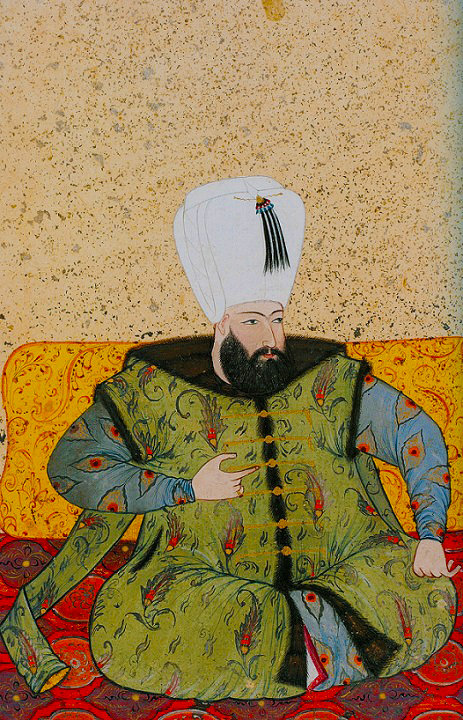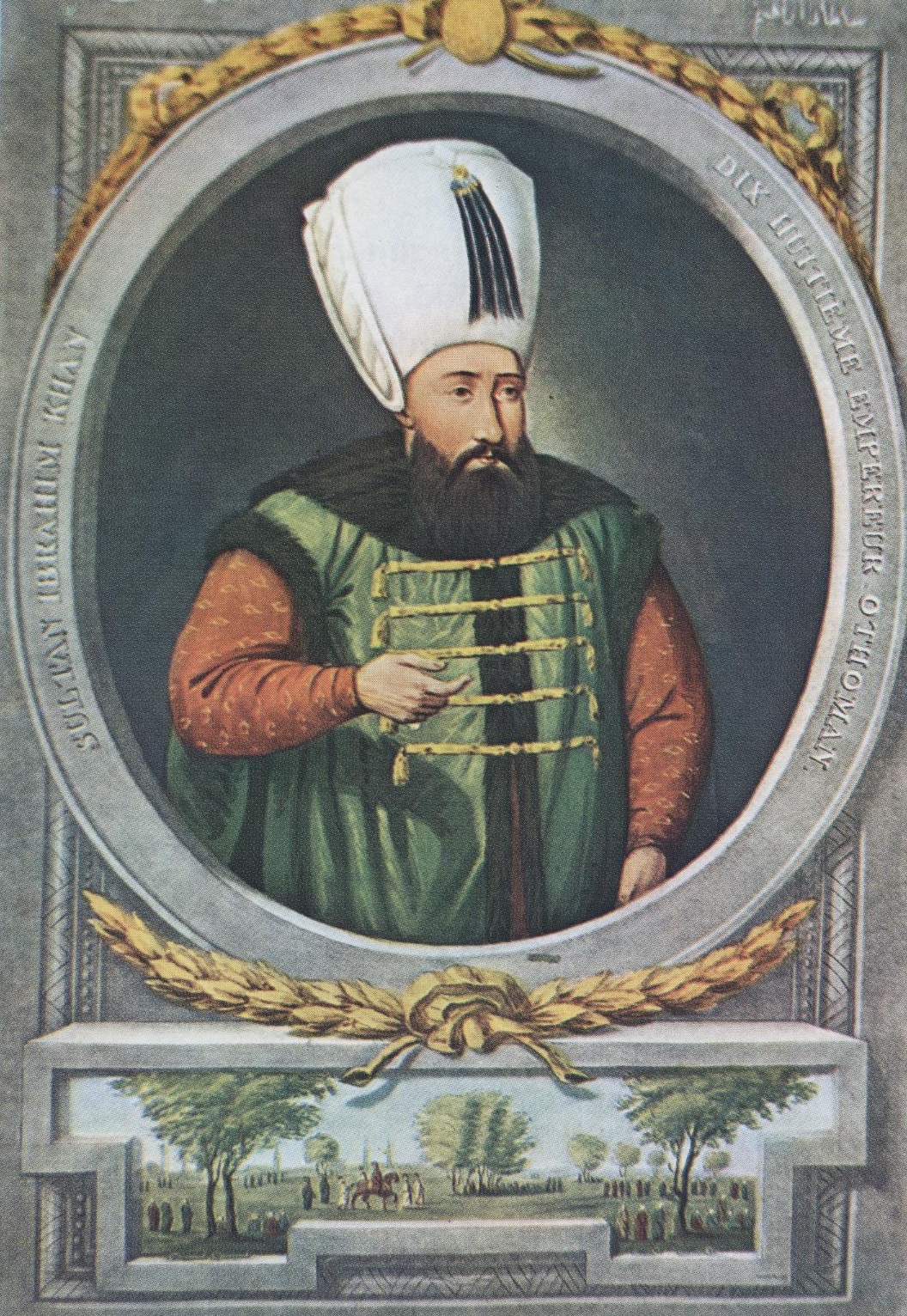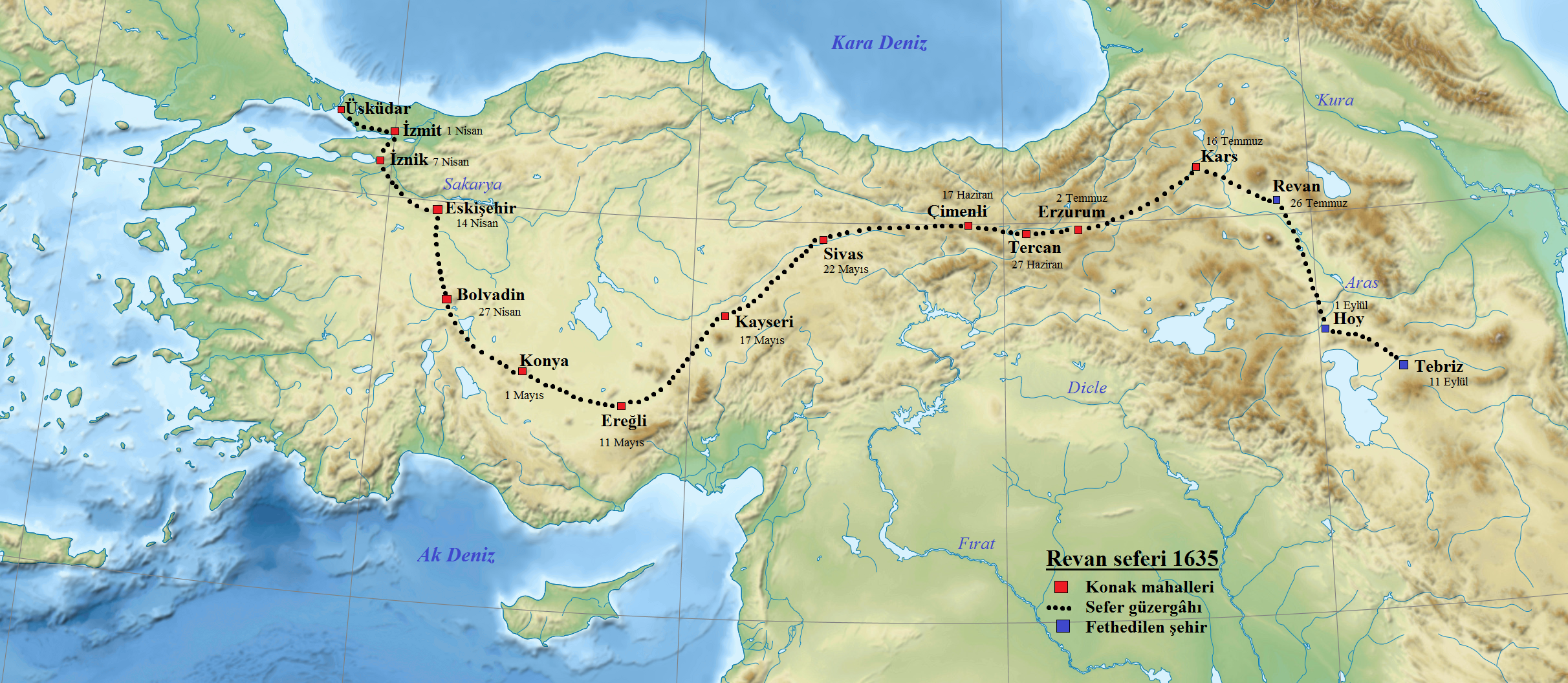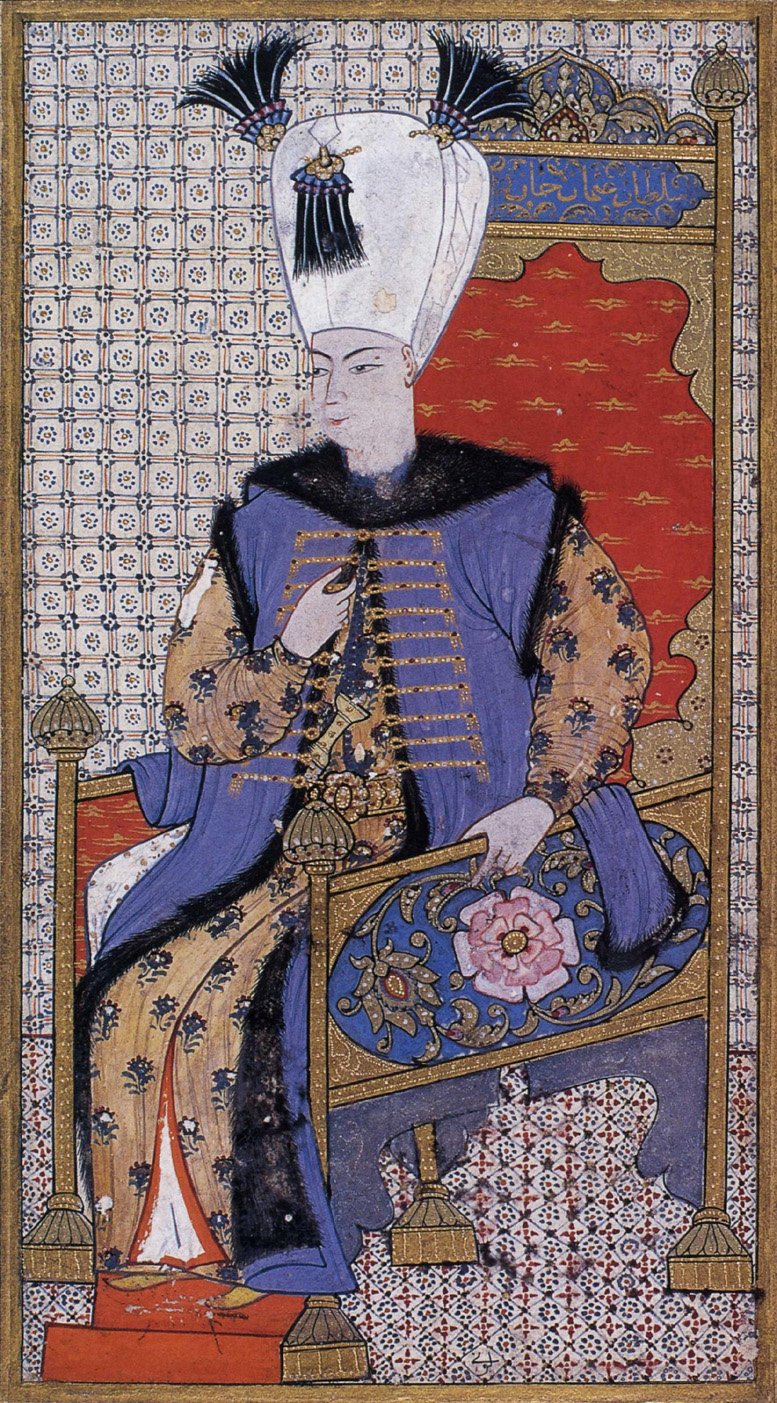|
Еһehzade SГјleyman
Еһehzade SГјleyman (Ottoman Turkish: ШҙЩҮШІШ§ШҜЩҮ ШіЩ„ЩҠЩ…Ш§ЩҶ; 1613/1615 вҖ“ 27 July 1635) was an Ottoman prince and the son of Sultan Ahmed I. He was the brother of Murad IV and Ibrahim, and half-brother of Osman II. Life Еһehzade SГјleyman was born between 1613 and 1615 in TopkapДұ Palace to Sultan Ahmed I. His mother is unknown, supposed to be either Mahfiruz Hatun, Ahmed's first consort or (possibly) KГ¶sem Sultan. After Murad IVвҖҷs accession in 1623, SГјleyman was confined in the Kafes. Death In 1635, SГјleyman, his (maybe) brother Selim and his half-brother Bayezid were executed during the celebrations over the victory at Erivan. The orders were given by Murad IV, the cause of SГјleyman's execution is unknown. It was most likely that he was found favored on the throne by Murad's opponents and rivals that wanted to overthrown him. After his death, he was buried in his father Ahmed I Ahmed I ( '; ; 18 April 1590 вҖ“ 22 November 1617) was the sultan of the Otto ... [...More Info...] [...Related Items...] OR: [Wikipedia] [Google] [Baidu] |
Blue Mosque, Istanbul
The Blue Mosque, officially the Sultan Ahmed Mosque (), is an Ottoman-era historical imperial mosque located in Istanbul, Turkey. It was constructed between 1609 and 1617 during the rule of Ahmed I and remains a functioning mosque today. It also attracts a large number of tourists and is one of the most iconic and popular monuments of Ottoman architecture. The mosque has a classical Ottoman layout with a central dome surrounded by four semi-domes over the prayer hall. It is fronted by a large courtyard and flanked by six minarets. On the inside, it is decorated with thousands of Iznik tiles and painted floral motifs in predominantly blue colours, which give the mosque its popular name. The mosque's ''kГјlliye'' (religious complex) includes Ahmed's tomb, a madrasa, and several other buildings in various states of preservation. The mosque was built next to the former Hippodrome and stands across from the Hagia Sophia, another popular tourist site. The Blue Mosque was include ... [...More Info...] [...Related Items...] OR: [Wikipedia] [Google] [Baidu] |
Ibrahim Of The Ottoman Empire
Ibrahim (; ; ; 13 October 1617 вҖ“ 18 August 1648) was the sultan of the Ottoman Empire from 1640 until 1648. He was born in Constantinople as the last son of sultan Ahmed I and KГ¶sem Sultan, an ethnic Greek originally named Anastasia. He was called Ibrahim the Mad () due to his mental condition and behavior. However, historian Scott Rank notes that his opponents spread rumors of the sultan's insanity, and some historians suggest he was more incompetent than mad. Early life Ibrahim was born on 13 October 1617 as the last son of Sultan Ahmed I and his Haseki Sultan, KГ¶sem Sultan and when he was merely a month old, his father suddenly died and Ibrahim's uncle Mustafa I became the new sultan. KГ¶sem Sultan and her children, including an infant Ibrahim, were sent to the Old Palace. After his brother Murad IV inherited the throne from his uncle Mustafa I, Ibrahim was confined in the Kafes, which affected his health. Murad had Ibrahim's two surviving half-brothers Еһehzade B ... [...More Info...] [...Related Items...] OR: [Wikipedia] [Google] [Baidu] |
1635 Deaths
Events January–March * January 23 – 1635 Capture of Tortuga: The Spanish Navy captures the Caribbean island of Tortuga off of the coast of Haiti after a three-day battle against the English and French Navy. * January 25 – King Thalun moves the capital of Burma from Pegu to Ava. * February 22 – The ''AcadГ©mie franГ§aise'' in Paris is formally constituted, as the national academy for the preservation of the French language. * March 22 – The Peacock Throne of India's Mughal Empire is inaugurated in a ceremony in Delhi to support the seventh anniversary of Shah Jahan's accession to the throne as Emperor. * March 26 – Philipp Christoph von SГ¶tern, the Archbishop-Elector of Trier, is taken prisoner in a surprise attack by Spanish Habsburg troops, leading to a declaration of war against Spain by France and the beginning of the Franco-Spanish War. April–June * April 13 – Druze warlord Fakhr-al-Din II is executed in ... [...More Info...] [...Related Items...] OR: [Wikipedia] [Google] [Baidu] |
1610s Births
Year 161 ( CLXI) was a common year starting on Wednesday of the Julian calendar. At the time, it was known as the Year of the Consulship of Caesar and Aurelius (or, less frequently, year 914 ''Ab urbe condita''). The denomination 161 for this year has been used since the early medieval period, when the Anno Domini calendar era became the prevalent method in Europe for naming years. Events By place Roman Empire * March 7 – Emperor Antoninus Pius dies, and is succeeded by Marcus Aurelius, who shares imperial power with Lucius Verus, although Marcus retains the title Pontifex Maximus. * Marcus Aurelius, a Spaniard like Trajan and Hadrian, is a stoical disciple of Epictetus, and an energetic man of action. He pursues the policy of his predecessor and maintains good relations with the Senate. As a legislator, he endeavors to create new principles of morality and humanity, particularly favoring women and slaves. * Aurelius reduces the weight of a goldpiece, the aureus, ... [...More Info...] [...Related Items...] OR: [Wikipedia] [Google] [Baidu] |
Ottoman Princes
Ottoman may refer to: * Osman I, historically known in English as "Ottoman I", founder of the Ottoman Empire * Osman II, historically known in English as "Ottoman II" * Ottoman Empire 1299вҖ“1922 ** Ottoman dynasty, ruling family of the Ottoman Empire *** OsmanoДҹlu family, modern members of the family * Ottoman Caliphate 1517вҖ“1924 * Ottoman Turks, a Turkic ethnic group * Ottoman architecture * Ottoman bed, a type of storage bed * Ottoman (furniture), padded stool or footstool * Ottoman (textile), fabric with a pronounced ribbed or corded effect, often made of silk or a mixture See also * Ottoman Turkish (other) * Osman (other) * Usman (other) * Uthman (name) Uthman (), also spelled Othman, is a male Arabic name#Ism, Arabic given name with the literal meaning of a young bustard, Snake, serpent, or dragon. It is popular as a male given name among Muslims. It is also transliterated as Osman (name), Osma ..., the male Arabic given name from which the ... [...More Info...] [...Related Items...] OR: [Wikipedia] [Google] [Baidu] |
17th-century Ottoman Royalty
The 17th century lasted from January 1, 1601 (represented by the Roman numerals MDCI), to December 31, 1700 (MDCC). It falls into the early modern period of Europe and in that continent (whose impact on the world was increasing) was characterized by the Baroque cultural movement, the latter part of the Spanish Golden Age, the Dutch Golden Age, the French ''Grand SiГЁcle'' dominated by Louis XIV, the Scientific Revolution, the world's first public company and megacorporation known as the Dutch East India Company, and according to some historians, the General Crisis. From the mid-17th century, European politics were increasingly dominated by the Kingdom of France of Louis XIV, where royal power was solidified domestically in the civil war of the Fronde. The semi-feudal territorial French nobility was weakened and subjugated to the power of an absolute monarchy through the reinvention of the Palace of Versailles from a hunting lodge to a gilded prison, in which a greatly expanded ro ... [...More Info...] [...Related Items...] OR: [Wikipedia] [Google] [Baidu] |
OttomanвҖ“Safavid War (1623вҖ“1639)
The OttomanвҖ“Safavid War of 1623вҖ“1639 was a conflict fought between the Ottoman Empire and Safavid Iran, then the two major powers of Western Asia, over control of Mesopotamia. After initial Safavid success in recapturing Baghdad and most of modern Iraq, having lost it for 90 years, the war became a stalemate as the Safavids were unable to press further into the Ottoman Empire, and the Ottomans themselves were distracted by wars in Europe and weakened by internal turmoil. Eventually, the Ottomans were able to recover Baghdad, taking heavy losses in Capture of Baghdad (1638), the final siege, and the signing of the Treaty of Zuhab ended the war in an Ottoman victory. Roughly speaking, the treaty restored the borders of Peace of Amasya, 1555, with the Safavids keeping Safavid Daghestan, Daghestan, Safavid Shirvan, Shirvan, eastern History of Georgia (country), Georgia, and Eastern Armenia, while western Georgia and Western Armenia decisively came under Ottoman rule. The eastern ... [...More Info...] [...Related Items...] OR: [Wikipedia] [Google] [Baidu] |
Еһehzade Bayezid (son Of Ahmed I)
Еһehzade Bayezid (; November 1612 - 27 July 1635) was an Ottoman prince and son of Sultan Ahmed I and Mahfiruz, the Sultan's first concubine. Life He was born to Ahmed I and Mahfiruz, the Sultan's first consort. He was a few months younger than his half-brother Еһehzade Murad (future sultan Murad IV). When Ahmed died on 22 November 1617, he was placed in the Kafes with his half brothers Mehmed, Murad, Selim, Kasim and Ibrahim in unknown period during the reign of his uncle sultan Mustafa I and brother Osman II. After Mustafa was deposed and replaced by Osman, his half-brother Mehmed was executed under the orders of Osman one year before being murdered by his enemies, which brought Mustafa once again to the throne. After Mustafa was deposed for a second time, Bayezid's half-brother Murad was placed in the throne before him due to being older by a few months. However, on 27 July 1635, he was executed along with his half-brothers Suleiman and Selim. The orders were carried out ... [...More Info...] [...Related Items...] OR: [Wikipedia] [Google] [Baidu] |
Kafes
The Kafes (, from ), literally "cage", was the part of the Imperial Harem of the Ottoman Palace where possible successors to the throne were kept under a form of house-arrest and constant surveillance by the palace guards. The early history of the Ottoman Empire is littered with succession wars between rival sons of the deceased sultan. It was common for a new sultan to have his brothers killed, including infants,{{cite book , last=Meyer , first=G. J. , author-link=G. J. Meyer , date=May 30, 2006 , title=A World Undone: The Story of the Great War, 1914 to 1918 , publisher=Delacorte Press , page=89 , isbn=0553803549 sometimes dozens of them at once. This practice reduced the number of claimants to the throne, leading to several occasions where the Ottoman line seemed destined to end. The confinement of heirs provided security for an incumbent sultan and continuity of the dynasty. First use When Ahmed I died in 1617, his eldest son was only 13 years old, and for the first time ... [...More Info...] [...Related Items...] OR: [Wikipedia] [Google] [Baidu] |
Osman II
Osman II ( ''вҖҳOsmДҒn-i sДҒnД«''; ; 3 November 1604 вҖ“ 20 May 1622), also known as Osman the Young (), was the sultan of the Ottoman Empire from 26 February 1618 until his regicide on 20 May 1622. Early life Osman II was born at TopkapДұ Palace, Constantinople, the son of Sultan Ahmed I (1603–17) and one of his consorts Mahfiruz Hatun. According to later traditions, at a young age, his mother had paid a great deal of attention to Osman's education, as a result of which Osman II became a known poet and was believed to have mastered many languages, including Arabic, Persian, Greek, Latin, and Italian; although this has since been refuted. Osman was born eleven months after his father Ahmed's transition to the throne. He was trained in the palace. According to foreign observers, he was one of the most cultured of Ottoman princes. Osman's failure to capture the throne at the death of his father Ahmed might have been caused by the absence of a mother to lobby in hi ... [...More Info...] [...Related Items...] OR: [Wikipedia] [Google] [Baidu] |
Murad IV
Murad IV (, ''MurДҒd-Дұ RДҒbiКҝ''; , 27 July 1612 вҖ“ 8 February 1640) was the sultan of the Ottoman Empire from 1623 to 1640, known both for restoring the authority of the state and for the brutality of his methods. Murad IV was born in Constantinople, the son of Sultan Ahmed I (r. 1603вҖ“17) and KГ¶sem Sultan. He was brought to power by a palace conspiracy when he was just 11 years old, and he succeeded his uncle Mustafa I (r. 1617вҖ“18, 1622вҖ“23). Until he assumed absolute power on 18 May 1632, the empire was ruled by his mother, KГ¶sem Sultan, as ''nДҒКҫib-i salб№ӯanat'' (regent). His reign is most notable for the OttomanвҖ“Safavid War (1623вҖ“1639), OttomanвҖ“Safavid War, of which the Treaty of Zuhab, outcome would partition the Caucasus between the two Imperial powers for around two centuries, while it also roughly laid the foundation for the current TurkeyвҖ“IranвҖ“Iraq borders. Early life Murad IV was born on 27 July 1612 t ... [...More Info...] [...Related Items...] OR: [Wikipedia] [Google] [Baidu] |
Istanbul
Istanbul is the List of largest cities and towns in Turkey, largest city in Turkey, constituting the country's economic, cultural, and historical heart. With Demographics of Istanbul, a population over , it is home to 18% of the Demographics of Turkey, population of Turkey. Istanbul is among the List of European cities by population within city limits, largest cities in Europe and List of cities proper by population, in the world by population. It is a city on two continents; about two-thirds of its population live in Europe and the rest in Asia. Istanbul straddles the BosphorusвҖ”one of the world's busiest waterwaysвҖ”in northwestern Turkey, between the Sea of Marmara and the Black Sea. Its area of is coterminous with Istanbul Province. Istanbul's climate is Mediterranean climate, Mediterranean. The city now known as Istanbul developed to become one of the most significant cities in history. Byzantium was founded on the Sarayburnu promontory by Greek colonisation, Greek col ... [...More Info...] [...Related Items...] OR: [Wikipedia] [Google] [Baidu] |






